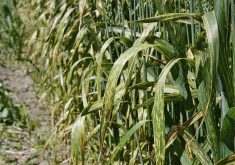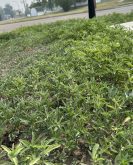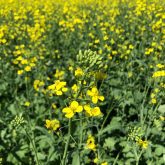Don’t turn a blind eye: Admit you’ve got a problem and get on top of it right away.
The issue is herbicide-resistant wild oats and that’s the advice from a trio of Prairie producers in a new video from the Resistant Wild Oat Action Committee.
“It’s definitely something that it pays to get on sooner than later,” Hannah Konschuh, who farms near Cluny, says in the video. “If you think about the way that wild oats can capture all the moisture and nutrients that you want for your growing crop, it can turn into something pretty drastic pretty quickly.”
Read Also

Moo translator and methane measures: There’s an app for that
Dalhousie University researchers use artificial intelligence to create new dairy farm apps that analyze cattle sounds and measure methane.
Konschuh and the two other farmers featured in the video had all found herbicide-resistant wild oats on their operation — which isn’t surprising given surveys have found more than two-thirds of Prairie fields have wild oats with some level of resistance.
The new video is part of an ongoing effort to ramp up awareness of the problem. In fact, the action committee itself is part of that effort — it was set up two years ago at the request of some Alberta producers worried that not enough was being done.
The video is entirely in the words of the three producers, who talk about how they discovered they had resistant wild oats, the impact, and what steps they’ve taken.
For Konschuh, it was the sight of some seed-laden wild oats poking above the canopy just before harvest. She collected seed samples, which confirmed there was resistance.
“It’s definitely worth the few hundred dollars to run some tests,” she says in the video.
The cost of not taking quick action is very high, says Josh Lade, a transplanted Australian now farming north of Saskatoon.
“The amount of nutrients and water that even a one-leaf wild oat removes from the soil or your crop is insane,” he says.

Early detection and quick action kept the impact on her family’s operation “minimal,” says Konschuh. That effort included narrower row spacing (reducing it to 12 inches from 14), rotating out of herbicides that the wild oats were developing resistance to, and higher seeding rates.
For Lade, the fight was more intense and more costly.
“You’re talking 30, 40, 50 bucks an acre in some cases to get these weeds under control,” he says. “It’s been seven years of at least two modes of action. We’ve kind of got it under control but it’s been expensive.”
Manitoba producer Kendall Heise managed to avoid that scenario — but again, early detection was key. In his case, he was cropping some newly rented land when he spotted clumps of wild oats.
“The main thing is to identify these patches,” he says. “They’re irregular shaped, they don’t line up with sprayer misses, they don’t line up with anything else. They’re very oddly shaped, so you can identify them.”
No till and one-pass seeding have proven to be critical management practices, says Heise, who farms in the western part of the province.
“I disturb as little of the soil as possible so as to not wake up these resistant wild oats and, hopefully run the viability out of the seed bank before they have the right conditions to germinate.”
This type of ‘here’s what I did’ advice is central to the action committee’s plan for rallying producers to the battle against resistant wild oats.
“While some of our efforts might involve researchers communicating with growers, we really want to create a two-way dialogue and share ideas,” committee chair Eric Johnson (a research official at USask) told Alberta Wheat in its research newsletter this summer. “Somebody might be having success with fall-seeded crops, and another doing well with silaging. Our role is to provide a vehicle for the exchange of information.”
The video illustrates that different producers in different situations take different approaches.
Lade’s advice is to put the agronomy pedal to the metal.
“Get the population down and then grow that good cultivar, grow a good competitive crop, high seeding rates, compete and then get in there early with that in-crop spray.”
Heise, who has spreadsheets on his herbicide applications on individual fields going back decades, suggests looking at your records to see if you’ve been unconsciously favouring certain herbicide groups over the years.
Konschuh is working on ways to use a granular Group 8 in the dry conditions that are common in her area as well as diligent scouting and testing of any wild oat “towering above the crop and ready to drop their seeds everywhere.”
And all three urge producers to recognize the threat.
“Listen to research, listen to the scientists, listen to other places in the world,” says Lade. “Just try to do a little bit. Don’t hang back and think there’s going to be a silver bullet.”
The video and a series of infographics can be found at weedscience.ca (click on the Resources tab and then on Resistant Wild Oat Action Committee). The committee is funded by Alberta Wheat, other Prairie farm groups, and RDAR, Alberta’s ag research funding agency.
















